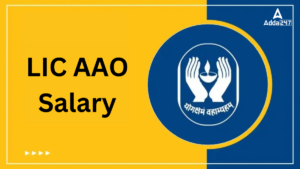Dear Readers,
As we all know SBI PO is here and we are here to help you by providing daily night class quizzes on new pattern questions with different topics that will help you to go through this exam. So, here we are with some tough New Pattern questions of reasoning.

As we all know SBI PO is here and we are here to help you by providing daily night class quizzes on new pattern questions with different topics that will help you to go through this exam. So, here we are with some tough New Pattern questions of reasoning.

Directions (Q1-5) Study the given information carefully to answer the following questions:
A group of seven members are sitting in a row facing north. There are three females in the group. No female sits at the extreme ends of the row, but they all sit adjacent to each other.
There are three persons between T and U. Z is on the immediate right of W and is one of the immediate left of U. T is the immediate neighbor of V and X. There is only one person between T and W and there are two persons between X and U. Y is not at the left end of the row. No female is neighbor of V and Y.
Q1. Who among the following sits at the extreme ends of the row?
(a) T, U
(b) Y, T
(c) V, Y
(d) W, T
(e) None of the above
Q2. Which of the following is the group of females?
(a) T, X, W
(b) W, Z, X
(c) U, W, Z
(d) Can’t be determined
(e) None of the above
Q3. Who among the following is sitting third to the left of Y?
(a) W
(b) X
(c) T
(d) Z
(e) None of the above
Q4. Four of the following five is alike in a certain way and hence forms a group. Which is the one that does not belong to that group?
(a) U, Y
(b) W, Z
(c) Z, X
(d) V, X
(e) T, U
Q5. How many persons are there between T and Z?
(a) None
(b) One
(c) Two
(d) Three
(e) None of the above
Directions (6-10): In the following questions, only one Conclusion is given and five statements are given as (a), (b), (c), (d) and (e). From this you have to take the statements to be true even if they seem to be at variance with commonly known facts and then decide which of the given statement logically follows.
Q6. Conclusions:
Some wheels are bangles
All rings are wheels
Some tyres are bangles
(a) Statements: Some chains are bangles. All bangles are rings. All rings are tyres. No tyres are wheels
(b) Statements: All chains are bangles. No bangles are rings. All rings are tyres. All tyres are wheels
(c) Statements: Some chains are bangles. Some bangles are rings. All rings are tyres. All tyres are wheels
(d) Statements: Some chains are bangles. Some bangles are not rings. No rings are tyres. All tyres are wheels
(e) Statements: Some chains are bangles. No bangles are rings. All rings are not tyres. All tyres are wheels
Q7. Conclusions:
Some seas are stones
Some jungles are hills
Some stones are hills
(a) Statements: All hills are roads. All roads are stones. All stones are jungles. All jungles are sea
(b) Statements: Some hills are roads. All roads are stones. No stones are jungles. All jungles are sea
(c) Statements: No hills are roads. All roads are stones. All stones are jungles. Some jungles are sea
(d) Statements: Some hills are roads. Some roads are stones. All stones are jungles. All jungles are sea
(e) Statements: All hills are roads. All roads are stones. No stones are jungles. No jungles are sea
Q8. Conclusions:
Some threads are room
Some needles are cloth
Some threads are house is a possibility
(a) Statements: No needles are threads. Some threads are clothes. No cloth is room. All rooms are houses
(b) Statements: All needles are threads. Some threads are clothes. No cloth is room. All rooms are houses
(c) Statements: Some needles are threads. Some threads are clothes. No cloth is room. All rooms are houses
(d) Statements: All needles are threads. All threads are clothes. All cloth is room. Some rooms are houses
(e) Statements: All needles are threads. No threads are clothes. No cloth is room. No rooms are houses
Q9. Conclusions:
Some roofs are curtains
Some bags are walls is a possibility
Some curtains are bags
(a) Statements: All bags are toys. No bags are curtains. Some toys are not walls. All walls are roofs
(b) Statements: No bags are toys. All toys are curtains. Some curtains are not walls. All walls are roofs
(c) Statements: All bags are toys. All toys are curtains. Some curtains are not walls. All walls are roofs
(d) Statements: Some bags are toys. All toys are curtains. Some curtains are walls. All walls are roofs
(e) Statements: Some bags are toys. All toys are curtains. No curtains are walls. No walls are roofs
Q10. Conclusions:
Some plants are flowers
All roses are buds is a possibility
Some plants are buds
(a) Statements: Some roses are flowers. Some flowers are buds. All buds are leaves. All leaves are plants
(b) Statements: Some roses are flowers. Some flowers are not buds. No buds are leaves. All leaves are plants
(c) Statements: All roses are flowers. No flowers are buds. All buds are leaves. All leaves are plants
(d) Statements: No roses are flowers. No flowers are buds. All buds are leaves. All leaves are plants
(e) Statements: Some roses are flowers. Some flowers are buds. No buds are leaves. No leaves are plants
Directions (11-15): Study the following information carefully and answer the given questions
In a certain code language
“Giving more emphasis are” is written as “BQ16+, UT12!, KL08&, N009*.
” Make works as interesting ” is written as ” IR08!, LP33&, VY15+, MW04*.
“Lazy and intolerant attitude ” is written as “ZW09!, RA20*, UG16&, KD08#.
“Knowledge sharing must be ” is written as ” QB21!, XL08#, TC04&, JT27*.
Q11. What is the code for ‘Knowledge’ in the given code language?
(a) QB21!
(b) IR08!
(c) JT27*
(d) TC04&
(e) XL08#
Q12. What is the code for ‘Giving attitude’ in the given code language?
(a) BQ16+, MWO4
(b) UT12!, ZW09!
(c) UT12!, RA20*
(d) KL08&, UG16&
(e) UT12!, UG16&
Q13. What may be the possible code for ‘more interesting knowledge’ in the given code language?
(a) IR08!, KL08&, JT27*
(b) LP33&, KL08&, BQ16+
(c) ZW09!, VY15+, JT27*
(d) LP33&, KL08&, JT27*
(e) ZW09!, KL08&, JT27*
Q14. What may be the possible code for ‘be intolerant’ in the given code language?
(a) TC04&, RA20*
(b) QB21!, UG16&
(c) XL08#, KDO8#
(d) QB21!, ZW09!
(e) JT27*, ZW09!
Q15. What is the code for ‘works lazy’ in the given code language?
(a) UG16&, LP33&
(b) KDO8#, VY15+
(c) ZW09!, IR08!
(d) RA20*, MW04*
(e) None of the above




 GA Capsule for SBI Clerk Mains 2025, Dow...
GA Capsule for SBI Clerk Mains 2025, Dow...
 The Hindu Review October 2022: Download ...
The Hindu Review October 2022: Download ...
 LIC AAO Salary 2025, Revised Structure, ...
LIC AAO Salary 2025, Revised Structure, ...





